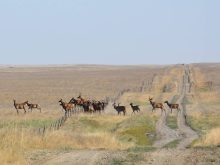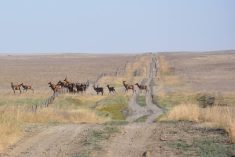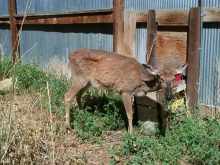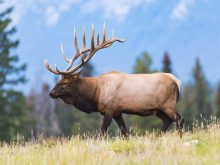Saskatchewan Cervid Alliance says new provincial regulations better manage chronic wasting disease on deer, elk farms
MEDICINE HAT — Regulatory changes in Saskatchewan are making it easier for ranchers to raise deer and elk for either meat or game preserves, according to a spokesperson with the Saskatchewan Cervid Alliance.
The changes recognize chronic wasting disease as a more manageable issue for those raising deer and elk in domestic herds than trying to control spread in wild populations.
Mark Oldfield, Saskatchewan Cervid Alliance spokesperson, said while meat prices for raised deer and elk may not be at the 1990s level, demand is currently outstripping supply. Regulatory changes in the province should make the sector more attractive to those seeking to enter the market, he added.
Read Also

Using artificial intelligence in agriculture starts with the right data
Good data is critical as the agriculture sector increasingly adopts new AI technology to drive efficiency, sustainability and trust across all levels of the value chain.
“The Saskatchewan government has figured out a way to manage chronic wasting disease within the game farm industry,” said Oldfield. “Now, if you get a positive test … the ability for you to still put your animals together and ship for meat is much easier than three or four years ago.”
It’s the same when it comes to shipping bulls to game preserves, but restrictions still exist on antler velvet.
Farmed animals are still quarantined and heads are still tested before meat is marketed, said Oldfield.
“That’s safer than any of the hunters shooting caribou, moose, white tail or mule deer in the province of Saskatchewan right now.”
Positive cases of CWD in raised elk and deer used to require the whole herd to be tested, which can only be done following slaughter.
“Now, if I were to get a positive case, my farm would be flagged as CWD positive. I would still test all my heads. I could see if I was having more positive cases. However, in the meantime, I can still market the meat animals and I can still market the hunt bulls,” Oldfield said.
The process is different than if a hunter takes a deer in the wild that might be CWD positive, sends the head for testing but processes and possibly consumes the meat in the meantime.
Oldfield said farmed deer and elk in which CWD is found can be managed either through culling or through breeding for genetic traits in cervids that provide resistance to the disease.
When CWD began to become endemic in Saskatchewan wild deer populations in the early 2000s, the Saskatchewan government tightly regulated the domestic market.
That added costs for ranchers and processors and put the brakes on the sector. But a greater understanding of managing CWD in farmed animals in Saskatchewan has led to better way to ensure a safe meat product is still made available, said Oldfield.
















